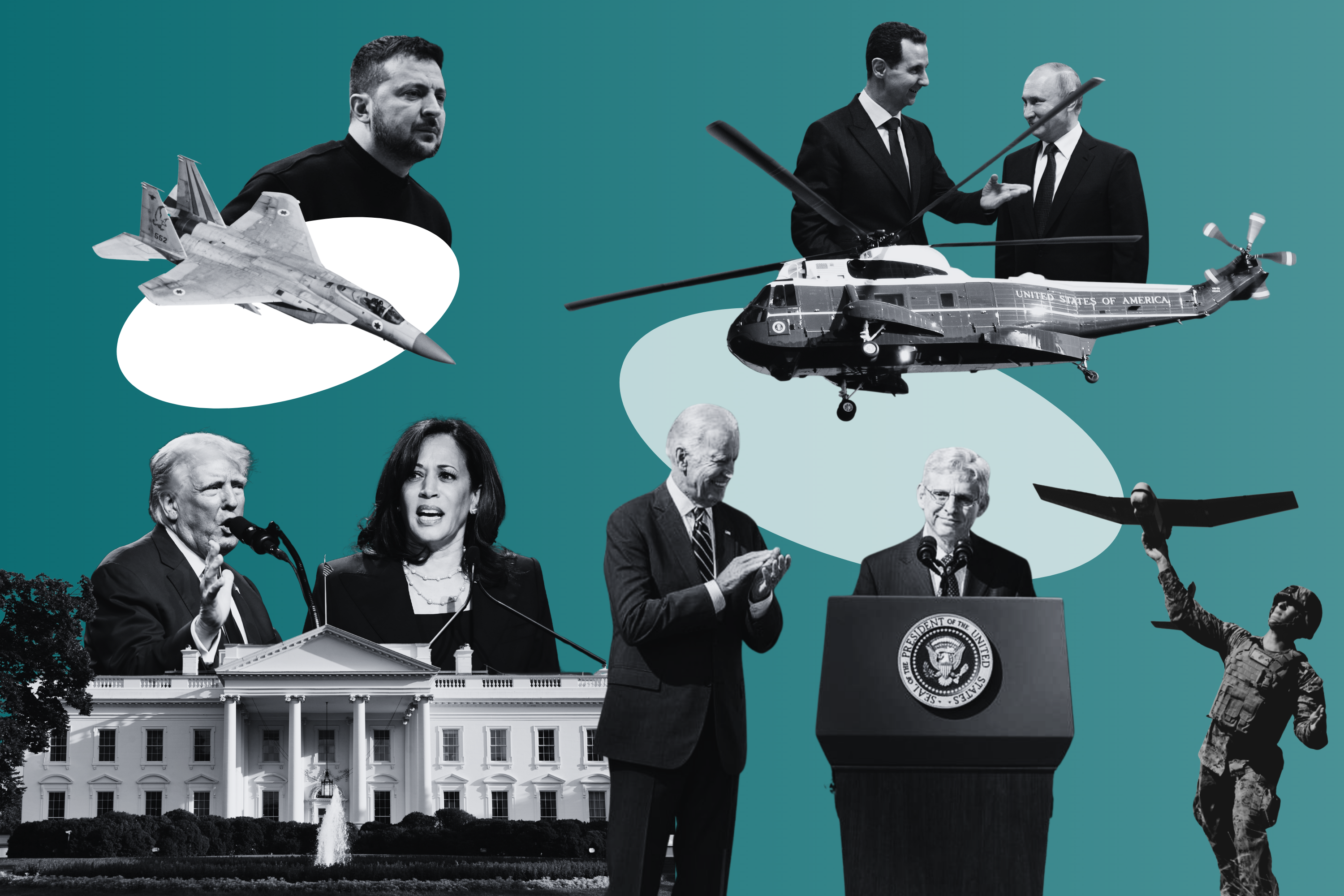"Lincoln's Code: The Laws of War in American History," by John Fabian Witt
Published by Free Press (2012)
Reviewed by Stephen C. Neff
Published by The Lawfare Institute
in Cooperation With

Published by Free Press (2012)
Reviewed by Stephen C. Neff
Of all the images that George Washington conjures up in the minds of Americans, surely that of war criminal must be the least likely. Yet this remarkable book begins with an account of charges levelled against Washington as a result of conduct in the French and Indian Wars in 1754. Specifically, the allegation was complicity on Washington’s part in the killing of a non-combatant in the course of an attack on a French detachment – a charge that Washington even admitted to (although he soon contended that the admission was inadvertent). In his later career as the leader of the American Revolutionary armies, Washington would take scrupulous care to become, in Professor Witt’s words, “the living embodiment of the Enlightenment way of war.”
The book proceeds to treat the way in which that Enlightenment way of war, as expounded most famously by the Swiss writer Emmerich de Vattel in 1758, evolved over the period from the late Eighteenth Century to the First World War. The book’s title therefore rather understates the range of material covered, since the Civil War section is only the middle part of three, comprising about half the book. It is a fascinating story, told with style and a steadily critical eye.
Detailed attention is especially given to two vital issues that presented themselves with special force in the frontier conditions prevailing in America in the late Eighteenth Century. The first was the presence of slavery, and the many ramifications that it was to have. This vexing issue presented itself in the very earliest days of the Revolutionary War, when British commanders offered freedom to slaves who would desert their revolutionary masters and cast their lot with the British. The dilemma is easily stated. Enlightenment thought inclined strongly against slavery – but it also inclined against the taking of private property belonging to enemy nationals in time of war. Insofar as slaves were property, their owners should be left in safe possession of their animate chattels. The second problematic issue was unconventional warfare. This too played a role in the Revolutionary war by virtue of the British employment of Indian auxiliary forces, in the full knowledge that these adjuncts were not, to put mildly, earnest students of Vattel. These two themes – slavery and unconventional warfare – constitute the central thread of Witt’s endlessly fascinating narrative.
These two issues arose once again in the new nation’s next major land conflict: the War of 1812, with Britain once again as the foe. As in the previous conflict, the British held out the prospect of freedom to slaves in return for their desertion of their masters and support of the British side. Fears (or hopes?) of a full-scale slave insurrection did not come to pass, but the question of compensation for American slaveholders whose property had absconded continued to haunt British-American relations for the next generation. Eventually, in the Webster-Ashburton Treaty of 1842, Britain agreed to provide compensation. (That agreement is more widely known for instituting the demilitarization of the Great Lakes.)
The challenges posed by unconventional warfare were also constantly at hand. As American settlement expanded relentlessly southward and westward, struggles against Indian tribes became common. And the view was widely held – not least by the redoubtable lawyer-cum-frontier warrior Andrew Jackson – that Indians were not entitled to the benefits of the Enlightenment way of war, since they refused to abide by its constraints. Jackson, as so often, proved as good (or bad) as his word. Where he encountered serious political trouble, though, was not in his treatment of Indians, but in his robust handling of two British nationals accused of inciting and aiding Indian enemies during Jackson’s Florida campaign. They were tried by a hastily organized military commission, found guilty, and executed in 1818.
Unconventional warfare also became an important, and highly troublesome, feature of the Mexican War of 1846-48, as Mexico began to rely on guerrilla forces in the wake of the repeated defeats of its conventional armies in the field. In response, General Winfield Scott made the first systematic use in American history of military commissions (or “councils of war,” as they were called) to try captured enemy troops for violations of the laws of war – and also to deny combatant status to guerrilla fighters.
In the Civil War, guerrilla warfare again became a feature of the hostilities, alongside familiar conventional clashes between regular armies. In this conflict, Francis Lieber, a German immigrant political scientist and international lawyer, made his famous contribution in the form of the Lieber Code. But he also made a less known, and highly important, second contribution to the Union cause: the exposition of the law on unconventional warfare. The book has a detailed account of Lieber’s life and career. And it strongly emphasizes the salience of slavery questions in the Lieber Code. Witt concludes that these were, in fact, the most innovative portions of the Code.
The slavery issue was also, of course, uppermost in President Lincoln’s considerations when he decided to promulgate the Emancipation Proclamation as a war measure – thereby consciously risking the opprobrium that Americans themselves had unleashed upon the British for their enlistment of runaway slaves in the earlier wars. But military necessity was put forward as the justification – with military necessity playing a prominent part too in the Lieber Code as a rationale for the employment of harsh measures. Indeed, military necessity is characterised by Witt as “the master principle that animated the [Lieber] code,” with necessity allowed as an exception to nearly every restriction on military conduct.
It should be appreciated how different this is from the modern concept of military necessity, which is, in essence, a restrictive concept, prohibiting the infliction of “unnecessary suffering.” Witt maintains that Lieber’s view of military necessity, in contrast, encompassed, in addition, a permissive element, allowing ordinarily unlawful measures to be taken, provided that the ultimate cause – in this case, the extirpation of slavery – was just. Lieber’s version of military necessity was, in Witt’s description, “a robust license to destroy.” As the Lieber Code itself put it, “[t]he more vigorously wars are pursued, the better it is for humanity. Sharp wars are brief.” In this spirit, Lieber approved of the general policy behind Sherman’s March to the Sea in 1864 – while also harbouring misgivings about abuses and acts of indiscipline that accompanied it.
There is a fine account of the various war-crimes trials that took place during and after the Civil War. But it is also carefully noted that the expression “war crime” only saw its first use in 1865, in correspondence between Lieber and Secretary of War Edwin Stanton. And it only entered the public domain several years after the war, when it was employed by the noted Swiss-German lawyer Kaspar Bluntschli (who was a friend and correspondent of Lieber’s).
If the Civil War finally ended the slavery issue, the problem of unconventional warfare continued to be very much alive, first on the western frontier in North America, and then in the Philippines in the years following the Spanish-American War of 1898. In these situations, the problem, in Witt’s view, is that the sense of the overwhelming justice of the Union cause in the Civil War – i.e., the extirpation of slavery – was no longer present. But the permissive approach to military necessity that suffused the Lieber Code nonetheless remained part of the American approach to the laws of war. In this sense, the longer term legacy of the Lieber Code may well have been more malign than is generally appreciated. The story that Witt tells, in short, is certainly not a triumphalist one.
Precedents set in the Mexican and Civil Wars continued to be applied in these later conflicts. In the Indian wars, trials by military commission were employed, resulting in death sentences in a number of cases. In the Philippines, the lawfulness of torture for the extraction of key information came to be a highly controversial issue. At least five American soldiers were placed on trial for engaging in the practice. The most notable was Major Edwin F. Glenn, who was also a lawyer. He was convicted, though with only a light sentence imposed. Remarkably, Glenn went later became the chief author of the United States’s manual on the laws of war of 1914, in which heavy reliance was placed on the earlier Lieber Code.
This brief summary touches only the highlights of this detailed and variegated narrative. The author also gives detailed attention to various questions of maritime warfare (such as the status of Confederate privateers in the early stages of the Civil War). In addition there is coverage of neutrality issues, such as the Trent Affair of 1861, as well as the vicissitudes of prisoner exchanges in the Civil War, the legal fate of the accused Lincoln assassins, the treason charges against Jefferson Davis – and much else besides.
There will be some dispute as to some of the central theses advanced by Witt. One is the closeness of the connection between the slavery question and the substantive content of the Lieber Code, and in particular the Code’s broad approach to military necessity. More specifically, some will question whether Lieber’s view of military necessity really differed very significantly from our modern one of avoiding unnecessary suffering. It may be noted (and Witt does carefully note it) that the Code’s actual definition of military necessity comprises “those measures which are indispensable for securing the ends of the war” – but with the explicit proviso that these measures be “lawful according to the modern law and usages of war.” The Code also specified that military necessity does not justify “cruelty” (such as “wanton devastation”), nor does it allow “any act of hostility which makes the return to peace unnecessarily difficult.” Necessity can, however, justify the seizing of private property (e.g., slaves) – with the payment of compensation. Witt’s position on Lieber’s view of military necessity may be open to challenge, but it is backed by a formidable body of evidence that doubters will need to confront.
In sum, this author has provided a rich feast of ideas in a splendid, and vividly written, narrative that is simultaneously stimulating, informative, and critical. It is impossible to read even the smallest portion of the book without learning at least something new. Moreover, it will be apparent to many readers (although Witt does not harp on the matter) that problems of unconventional warfare, including denial of combatant status, are all too relevant to our present times. To cap it all off, the book is handsomely produced and splendidly indexed. Everyone who is interested in the American experience of war – and particularly of the laws of war – should read it.
(Stephen C. Neff is a historian of the laws of war at University of Edinburgh School of Law, and author, among other works, of War and the Law of Nations, The Rights and Duties of Neutrals, and Justice in Blue and Gray: A Legal History of the Civil War.)




